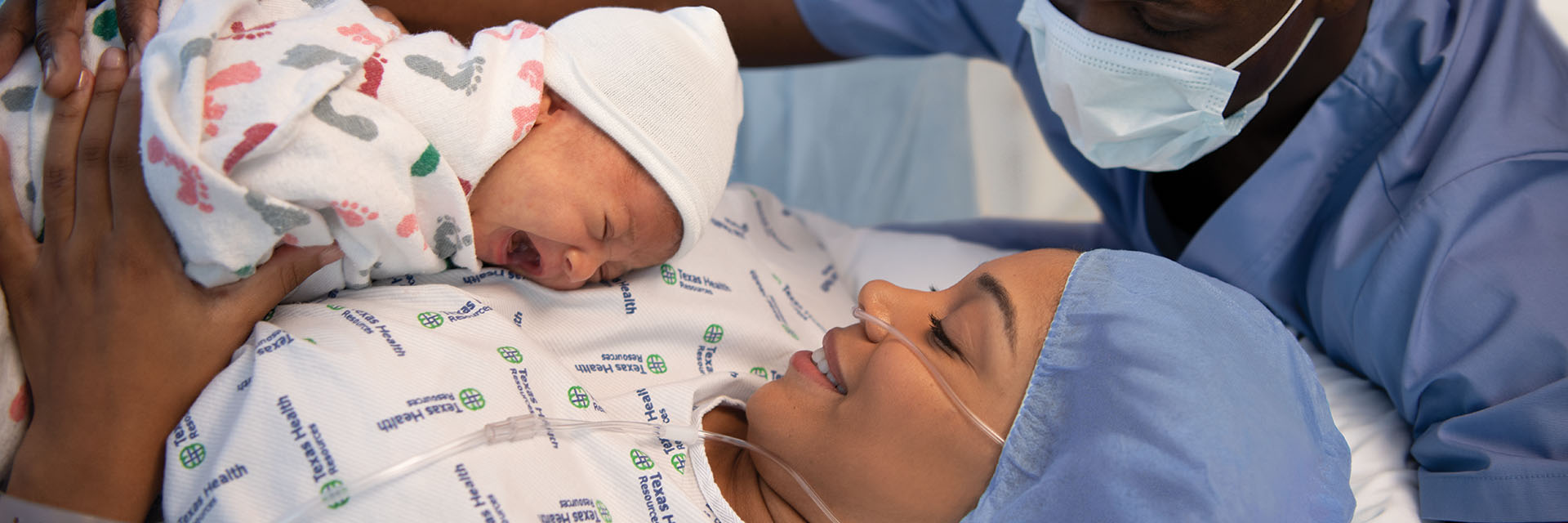A C-section allows your baby to be delivered through a surgical incision in your abdomen, rather than a vaginal delivery. It’s a relatively fast procedure—about 10-15 minutes—followed by about 30 minutes to close your incision with stitches.
You’ll likely be awake during this surgery, though numbed with anesthesia, and your partner can usually be in the operating room with you to offer support and witness the birth.
During the C-Section
- Your abdomen will be shaved if necessary, and then wiped with an antiseptic.
- Operating room staff will place sterile drapes over your stomach and a short screen to block your vision of the actual surgery. When your newborn comes into the world, ask the surgeon to hold him or her up for you to see. You’ll most likely still be able to hold your baby shortly after the surgery.
- The most common C-section incision is a horizontal one across the lower part of the uterus (a vertical incision may occur in emergencies to reach the baby faster).
- While federal law requires that insurers cover up to a 96-hour stay in the hospital after a C-section, the typical hospital stay is 2-3 days, followed by up to 6 weeks of taking it easy at home. Many moms are well enough to head home within 48 hours of this type of delivery, the same length of hospital stay typical after a vaginal birth.
After the Birth
Once your baby is born, we’ll prepare you for what you need to know before you leave the hospital. You will learn how to feed, burp, hold, diaper, bathe and swaddle your baby and how to keep the umbilical cord clean and dry until it falls off. If you had a C-section, we’ll show you how to do these things in ways that are comfortable for you.
You may feel either disappointed at not having a vaginal birth as planned, or relieved that a long labor was brought to a safe close. In either case, it’s helpful to discuss the labor with your healthcare provider afterward to be sure you understand the reasons the C-section was necessary.
A Message to Partners and Companions
If the baby is born by C-section, your role as the mother’s support in labor hardly changes. You still need to be by her side, keeping her calm, focused and relaxed.
- Tell her what is happening, watch the baby’s birth and describe it to her.
- Reassure her of the baby’s condition and the care he is receiving. You may be the first person to hold the baby; show him to the mother, help her touch him with her free hand and give him his first kiss.
- If the baby needs medical care in the nursery, the mother may feel most reassured if you go with the baby rather than staying with her, and then let her know as soon as possible how the baby is doing.
- Be prepared to offer more help at home, too, since it will take the mother longer to recover fully from a C-section. She’ll need to rest and not engage in heavy lifting or strenuous activity for a few weeks.
See also ...
This message is not intended to provide individual medical advice. Always seek the advice of a physician or qualified healthcare provider for any questions you have about your health or medical condition, your breastfeeding issues and your infant's health. Never disregard, avoid or delay contacting a doctor or other qualified professional because of something you have read in our emails, webpages or other electronic communications.
Powered by UbiCare

